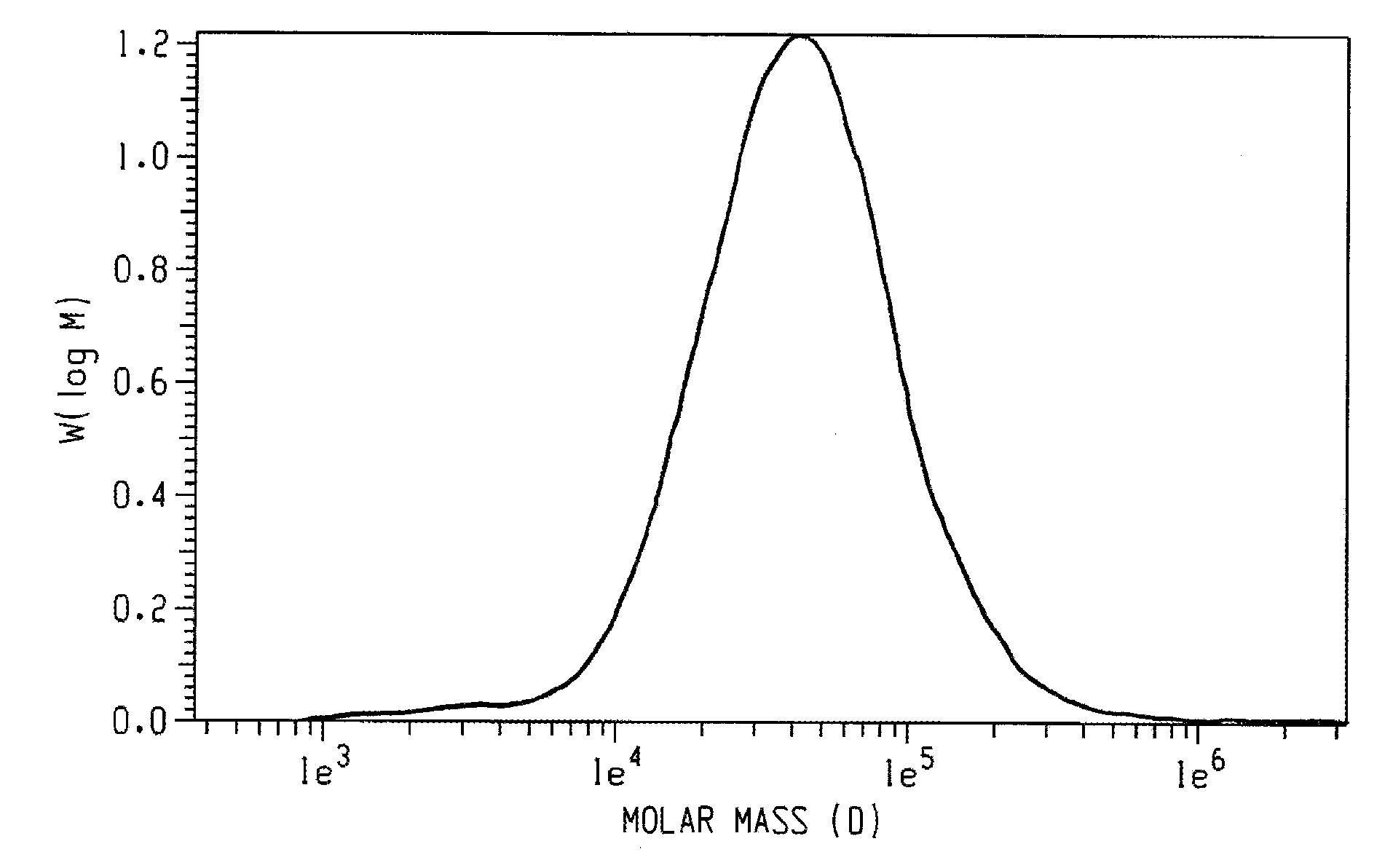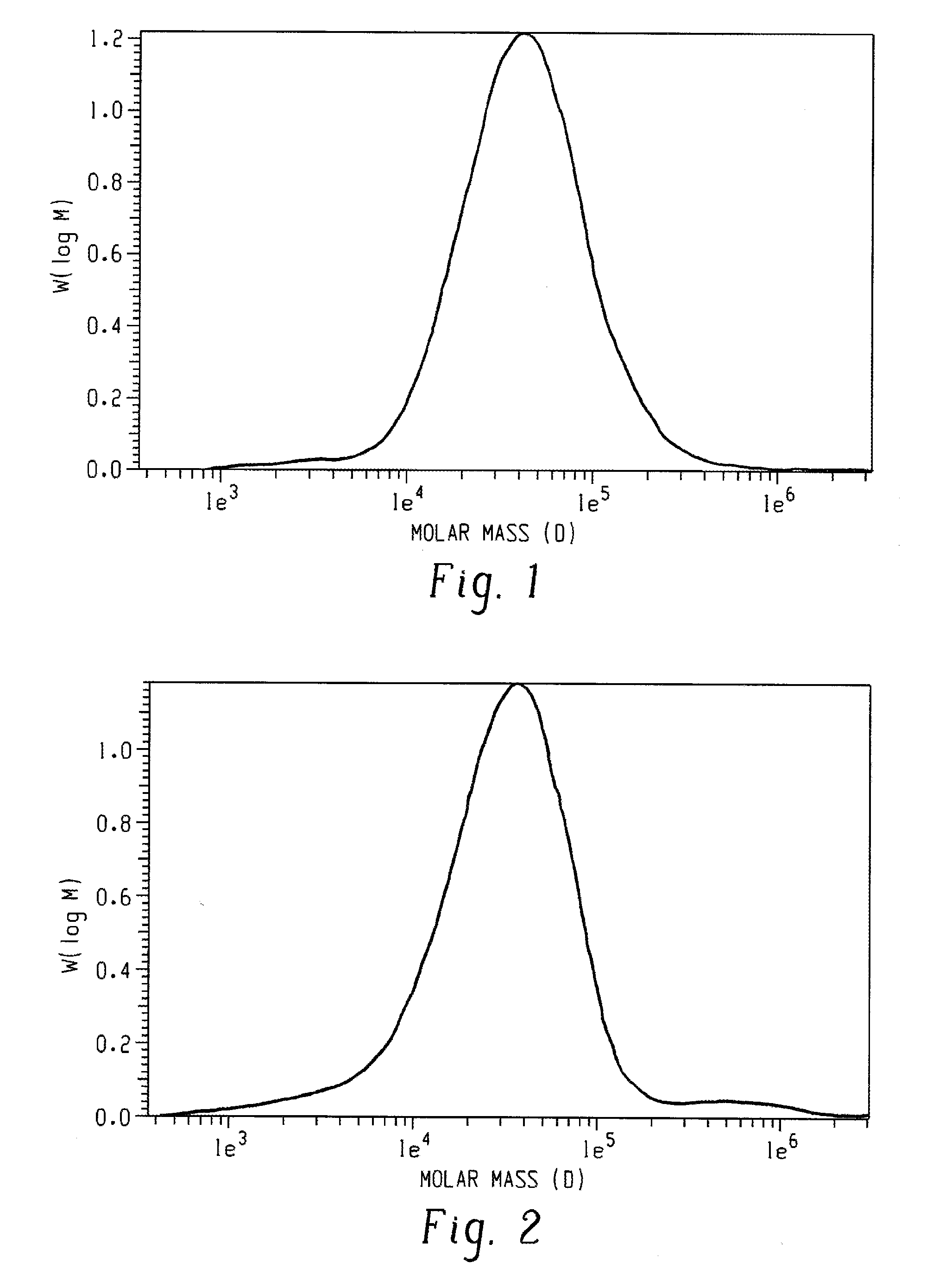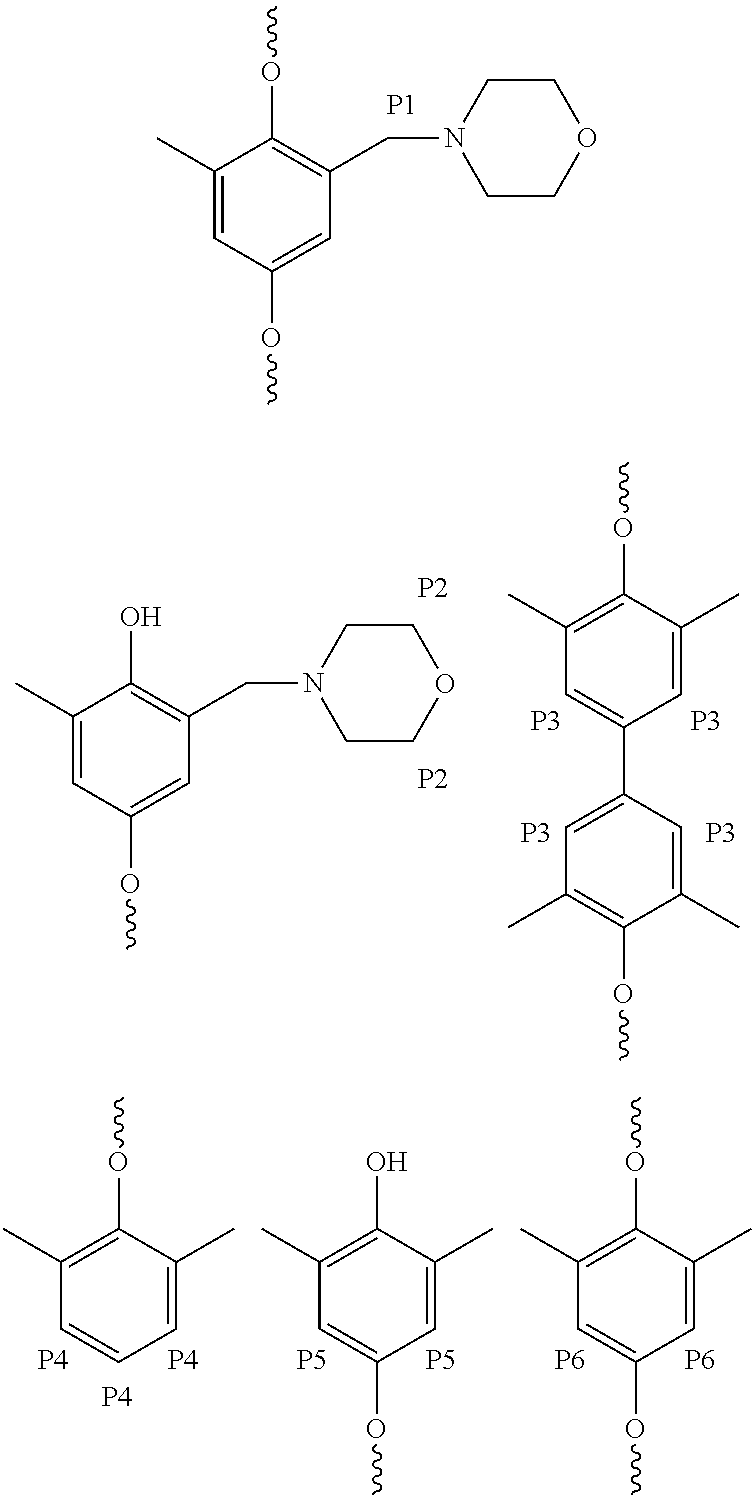Morpholine-substituted poly(arylene ether) and method for the preparation thereof
a technology of arylene ether and morpholine, which is applied in the field of morpholine-substituted poly (arylene ether) and the method for the preparation thereof, and can solve the problems of undesirable reduction of molecular weight increase during compounding and compatibilization
- Summary
- Abstract
- Description
- Claims
- Application Information
AI Technical Summary
Benefits of technology
Problems solved by technology
Method used
Image
Examples
embodiment 1
[0023]A poly(2,6-dimethyl-1,4-phenylene ether), wherein a purified sample of poly(2,6-dimethyl-1,4-phenylene ether) prepared by dissolution of the poly(2,6-dimethyl-1,4-phenylene ether) in toluene, precipitation from methanol, reslurry, and isolation has a monomodal molecular weight distribution in the molecular weight range of 250 to 1,000,000 atomic mass units, and comprises less than or equal to 2.2 weight percent of poly(2,6-dimethyl-1,4-phenylene ether) having a molecular weight more than fifteen times the number average molecular weight of the entire purified sample; wherein the purified sample after separation into six equal poly(2,6-dimethyl-1,4-phenylene ether) weight fractions of decreasing molecular weight comprises a first, highest molecular weight fraction; and wherein the first, highest molecular weight fraction comprises at least 10 mole percent of poly(2,6-dimethyl-1,4-phenylene ether) comprising a terminal morpholine-substituted phenoxy group.
embodiment 2
[0024]The poly(2,6-dimethyl-1,4-phenylene ether) of embodiment 1, wherein the purified sample comprises less or equal to 2.4 weight percent of poly(2,6-dimethyl-1,4-phenylene ether) having a molecular weight greater than seven times the peak molecular weight of the entire purified sample.
embodiment 3
[0025]The poly(2,6-dimethyl-1,4-phenylene ether) of embodiment 1 or 2, wherein the purified sample comprises less than or equal to 3.2 weight percent of poly(2,6-dimethyl-1,4-phenylene ether) having a molecular weight greater than five times the peak molecular weight of the entire purified sample.
PUM
| Property | Measurement | Unit |
|---|---|---|
| Percent by mass | aaaaa | aaaaa |
| Percent by mass | aaaaa | aaaaa |
| Percent by mass | aaaaa | aaaaa |
Abstract
Description
Claims
Application Information
 Login to View More
Login to View More - R&D
- Intellectual Property
- Life Sciences
- Materials
- Tech Scout
- Unparalleled Data Quality
- Higher Quality Content
- 60% Fewer Hallucinations
Browse by: Latest US Patents, China's latest patents, Technical Efficacy Thesaurus, Application Domain, Technology Topic, Popular Technical Reports.
© 2025 PatSnap. All rights reserved.Legal|Privacy policy|Modern Slavery Act Transparency Statement|Sitemap|About US| Contact US: help@patsnap.com



